Reviews
Brian De Palma
USA, 1996
Credits
Review by Stephen Snart
Posted on 02 July 2009
Source Paramount Home Entertainment DVD
Categories Favorites: The Action Movie
Mission: Impossible was the third highest grossing film of 1996 and upon its release set a record for widest opening of all time. At the time it received some mixed reviews - most citing narrative incoherence - but many of the top critics enjoyed it and its box office confirmed its status as a crowd pleaser. Admittedly, the plot - which involves government moles and the retrieval of an electronic list of agent identities - is quite complex, but it can be understood with some determination—no more than is necessary to follow an Antonioni film, for example. But even if the logistics of certain plot mechanics are questionable, at least the film is never visually incoherent, as has become de rigueur for action films over the past decade.
There are three major creative influences jostling for attention in Mission: Impossible—the original TV show which ran from 1966 to 1973, director Brian De Palma, and star/producer Tom Cruise. If any one of these three factors had taken dominance the film would have fizzled but remarkably, the film achieves a careful balance of the three, resulting in an enthralling summer blockbuster full of technological intrigue, breathtaking suspense and a wry sense of humor.
The film’s first four minutes brilliantly service all three creative personalities in a terse pre-credit and title sequence. The very first shot of the movie is of a character watching a TV monitor. The character is Jack, a weapons expert on a team of secret agents, and the screen he’s watching is a transmission of a nearby room in which two of his fellow agents are setting up a mark to divulge the name of an accomplice. Jack mutters at the screen, griping that his colleague is letting the situation run too long and taking too many risks. When the mark eventually reveals the name, the mustachioed, gray-haired agent controlling the situation opens a door, revealing that the hotel room under surveillance was actually a nearby set and that the older agent, who pulls off his mask, is Tom Cruise’s character Ethan Hunt. The sequence provides perfect metaphors for both the role of director and star. Jack serves as a director surrogate, sitting in a warded off room watching playback while uttering commands into a microphone, yielding less control of the unfolding situation than he would like. The nature of the sequence also appeals to De Palma’s personality in particular. It keys into the voyeurism that so fascinated him in Sisters, Blow Out, and Body Double - and which he would return to later in Femme Fatale - as well as his recurring plot mechanism of having the hero willing to use a loved female as bait. It also plays into Tom Cruise’s star status, providing him with an emphatic star entrance and establishing his character’s readiness to push boundaries and defy orders. The film then segues into a pulse-pounding 45-second opening credit sequence that explicitly recalls the television format in its length and construction. In addition to a revamped version of the television series’ signature theme song, the sequence employs split-second shots from later in the film to give the impression of a larger narrative universe and scope.
The remainder of the film doesn’t manage quite as even a balance of identities, the franchise roots assuming a decreased role. Beyond the credit sequence, the film only shares three concrete connections to the show: the “this tape will self-destruct in thirty seconds” briefing device, the theme music, and the character of Mr. Phelps. All three qualities are considerably tweaked since their appearance in the television show; the briefing and the theme music have been modernized, while Mr. Phelps’ function has changed from team leader to arch villain. As Mission: Impossible marked Tom Cruise’s first movie as producer and was created at the height of his popularity, having just come off three $100 million movies in a row, one would expect his personality to have commandeered the production. If you look at the surface of Mission: Impossible it may be tempting to write it off as a star vanity project, but if you look deeper you can see just how much of the film is resolutely a Brian De Palma production.
De Palma has been quoted as referring to the film as the most successful of his career1 but also as a film that “did not keep me up at night in my creative life.”2 Mission: Impossible is certainly the most mainstream film he’s ever made and eschews many of his trademark ostentatious devices like split-screen sequences and extended dolly shots, but the film still manages to fit into his favorite discourses of obsession and dreams (not for nothing is the penultimate scene scored to the Cranberries’ “Dreams”). Obsession is Ethan Hunt’s defining trait. His obsession in exposing the agency’s mole is relentless but his personal obsession with Claire, Jim Phelps’ wife and seemingly the only other surviving member of his original team, jeopardizes the success of his mission. While he is quick to piece together that Phelps is actually the mole, he refuses to believe that Claire could be involved because of his attraction to her. While the sex scene between Ethan and Claire is kept off-screen, it is heavily implied through both dialogue and cinematic codes (you can also catch a glimpse of it during the opening credits). As Ethan doesn’t have sex with Claire until after he learns that Phelps is alive and masterminding the whole scheme, his act takes on an overtone of revenge. Of course there’s also an Oedipal element, as Phelps had served as Ethan’s mentor and father figure (the film is careful to point out he has no living father, making explicit reference to his mother and ‘Uncle Donald’). Visualizing a sex scene and thus giving the audience more time to consider the psychological complications of this behavior might have been too much for a mainstream audience on a Saturday night. But no matter how sublimated it is, the act renders Ethan with an erotic perversion that is very similar to so many of De Palma’s characters.
The most famous sequence from the film is the instantly iconic NOC list heist in which Ethan descends into a Government office on a tight wire, circumnavigating a high-tech security system where the slightest rise in his body temperature will trigger a state of the art alarm system. Directed with flair and unhurried confidence, it’s one of De Palma’s greatest suspense sequences, of equal effect as the subway scene in Dressed to Kill, the staircase sequence in The Untouchables, and the bathroom grenade in Casualties of War. Adhering to the examples set by the French heist films that influenced the sequence, De Palma lets the heist play out in near silence with only the occasional sound of rope being lowered or strokes on a keyboard invading the soundtrack. It’s an incredibly risky move for a studio blockbuster, if the audience doesn’t feel the tension the film will become all the more susceptible to the threats of Saturday night chatter. But De Palma is prepared for this and uses a host of tricks to stretch out the sequence, including masterful cross-cutting, close-ups on a single bead of sweat, and most effectively, the arrival of a furry critter in the airshaft. All the while he maintains a spatial awareness - through overhead shots and framing that emphasizes Hunt’s proximity to objects - that keeps the spectator keyed into the severity of the situation instead of strolling off to the popcorn line.
Also of note is the film’s climax atop a high-speed train rattling through the British countryside and into the Chunnel. The seven-minute-and-twenty-second sequence, composed of 152 shots (probably on the more sedate side in comparison to the speed of cutting these days), is a piece of virtuoso filmmaking that still holds up marvelously thirteen years later. Yes, the pursuing helicopter looks awfully CGI-created in a couple of shots, but it’s very difficult to spot the trickery involved in putting Cruise on top of the speeding train. Cruise’s athletic prowess and convincing performance in this sequence earn him his box office gross percentage points, and De Palma’s expert shooting does everything to imply it’s really the star and not a stunt double. Most remarkable is a crane shot that begins wide enough to capture Hunt doing a spectacular cartwheel atop the train but then pushes into a close-up on Cruise’s face. There might be a cut hidden somewhere in the camera move, but I certainly can’t find it and this seeming continuity inherently links the actor to the stunt. Performance is a major component of this sequence, something underlined by the repeated shots of Cruise’s face being distorted by the intense winds, as De Palma recognizes that the climax cannot rest on special effects alone. As the whirring helicopter blades get closer and closer to the back of Ethan’s neck, De Palma cuts to Jean Reno’s sadistic expression as he pilots the helicopter forward, leaving the audience with no doubt that Reno’s character has every intention of decapitating our hero. Whereas the heist plays out in deafening silence, the visual spectacle of the train sequence requires a soundtrack of comparable grandeur. Danny Elfman’s original score masterfully punctuates the scene’s every development then seamlessly segues into a heart-pounding reprisal of the original theme just as Ethan gains control of the situation.
Even though Cruise has become a whipping boy in the tabloids and his religious beliefs have caused him to alienate a large percentage of his fanbase, the train sequence is an important reminder of how effective he is as a movie star. His gung-ho athleticism, undeniable charisma, and capacity for pathos made him the big screen’s most reliable leading man for nearly twenty years. Unfortunately, his recent behavior may have indelibly tainted his past performances. While dramatic work like Born on the Fourth of July and Eyes Wide Shut will likely emerge free from scorn in time, the star vehicles that depend so much on his celebrity will have more difficulty evading the shadow of his public persona. Even if his credibility doesn’t persevere in time, viewers might have less trouble with Mission: Impossible than some of his other films because for as much as it adheres to the Tom Cruise formula3, it also inverts it. While the opening twenty minutes display Cruise as the brash, precocious rule-breaker we expect him to be, the character has the rug pulled out from under him after twenty minutes and he becomes increasingly frantic and harried. This is not entirely dissimilar to the trajectory of most Tom Cruise films (albeit slightly more swift). The major difference is that the usual adversary in a Cruise vehicle is ultimately his own ego and how it fits into the system. But with Mission: Impossible - and previously, The Firm - Cruise’s situation is caused by external forces in the form of nefarious government/corporate rogues. This way, his plight is not only an ego-check, but even more damaging as he has been targeted as a sap. This move - still putting Cruise centerstage but diminishing his golden boy entitlement - demonstrates the awareness of formula and the calculated deviation away from it that makes Mission: Impossible such an artful, enduring crowd-pleaser.
- Brian De Palma. Interview by Wade Major, MrShowbiz.com. August 1998. In Brian De Palma Interviews, edited by Laurence F. Knapp, 2003: 155. ↩
- Brian De Palma. Interview by Anne Thompson, Premiere, September 1998. In Brian De Palma Interviews, edited by Laurence F. Knapp, 2003: 162. ↩
- See Roger Ebert’s review of Days of Thunder/em> for an entertaining check list of qualities for a Tom Cruise vehicle. Chicago Sun-Times June 27, 1990. ↩
More Favorites: The Action Movie
-

First Blood
1982 -

The General
1926 -

The Running Man
1987 -

Guns
1990 -

Highlander
1986 -

Death Race 2000
1975 -
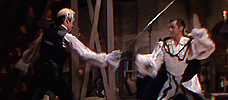
Scaramouche
1952 -

Do or Die
1991 -
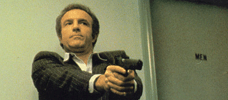
Thief
1981 -

Mission: Impossible
1996 -

Invasion U.S.A.
1985 -

Rambo: First Blood Part II
1985 -

Bullitt
1968 -

Hard Hunted
1992 -

The Fugitive
1993 -

Kindergarten Cop
1990 -
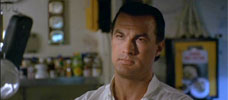
Under Siege
1992 -

Dirty Harry
1971 -

Rambo III
1988 -
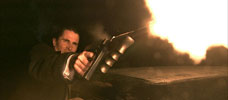
Public Enemies
2009 -

Day of the Warrior
1996 -

The Good, the Bad, the Weird
2008 -

Straw Dogs
1971 -

Die Hard
1988 -
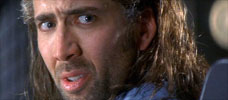
Con Air
1997 -

Collateral Damage
2002 -

Rambo
2008
We don’t do comments anymore, but you may contact us here or find us on Twitter or Facebook.



